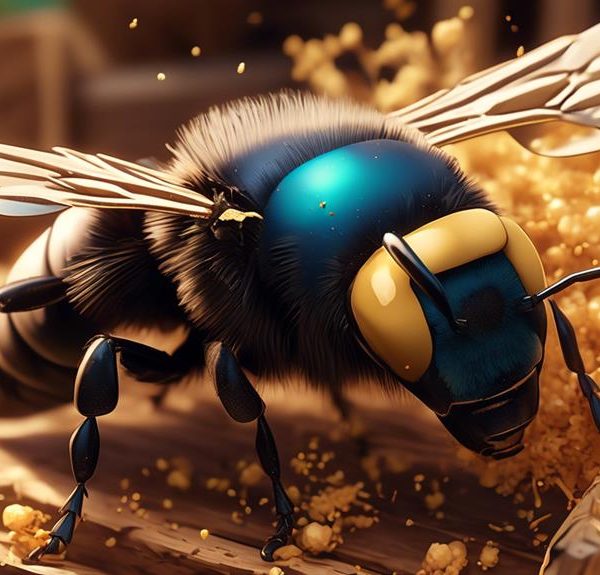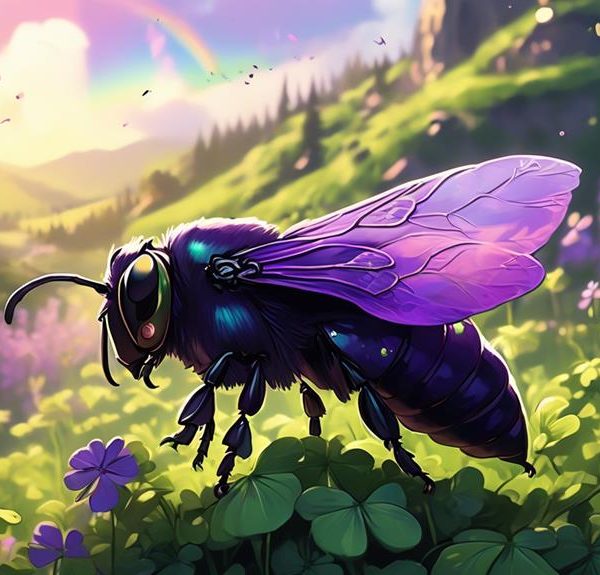Catch a glimpse into the nocturnal habits of carpenter bees, as we investigate whether they find sanctuary in flowers at night.
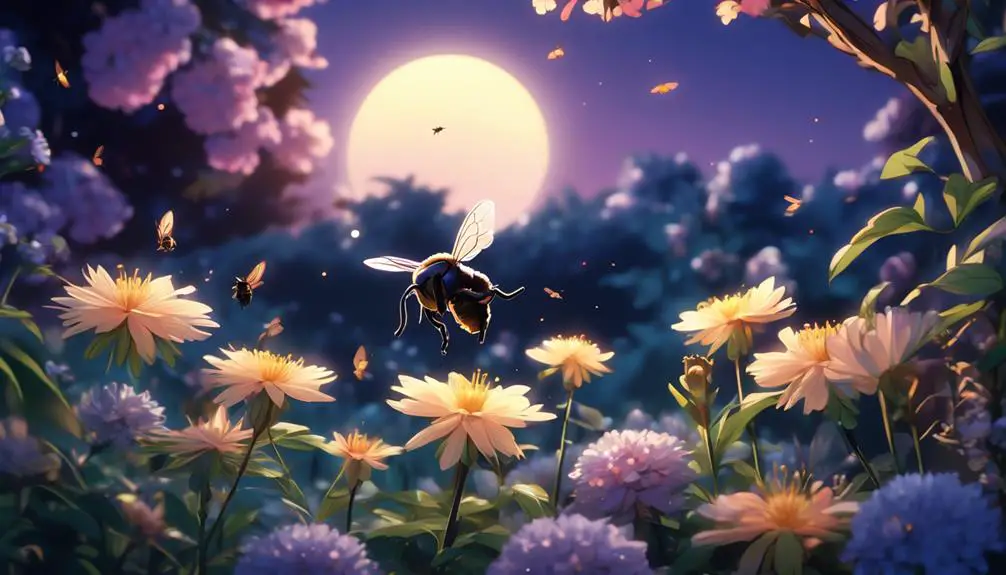
Do Carpenter Bees Sleep in Flowers
In the harsh light of day, the industrious carpenter bee is a common sight, yet under the cover of night, its whereabouts become a mystery. Have you ever wondered where these buzzing creatures retreat to when the sun dips below the horizon?
Do they perhaps find solace among the very flowers they frequent in daylight hours? The notion may seem fantastical, but there's a surprising amount of intrigue and debate around this subject.
Together, let's unfold this mysterious behavior, challenging our preconceived notions about these fascinating insects.
Key Takeaways
- Male carpenter bees sleep in flowers they feed on during the day to reduce exposure to predators and adverse weather.
- Female carpenter bees sleep in their nests, hanging upside down.
- Sleep is vital for memory consolidation in carpenter bees.
- Flowers serve as both a food source and a sleeping spot for carpenter bees.
Understanding Carpenter Bees
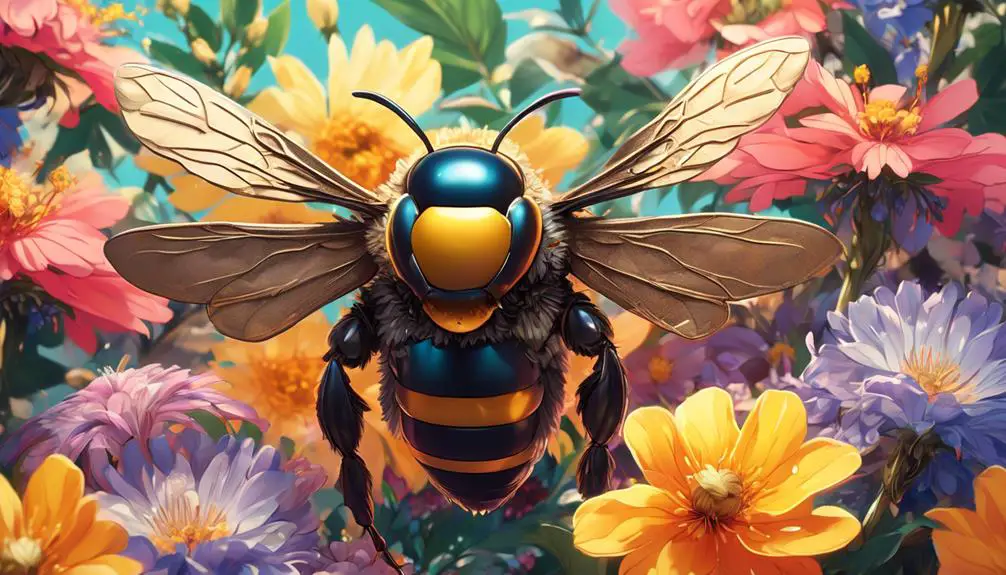
To fully comprehend the nature of carpenter bees, it's crucial to delve into their unique behaviors, physical characteristics, and ecological roles. Unlike most bees, carpenter bees are solitary creatures. They carve out nests in wood, hence their name. They're large, robust insects, often mistaken for bumblebees, but their shiny, hairless abdomen sets them apart.
Carpenter bees play an essential role in the ecosystem as pollinators. When they crawl into flowers for nectar, pollen sticks to their furry bodies and gets transferred to other flowers, aiding in plant reproduction. However, they're also known for 'nectar robbing'. They'll pierce the flower's base, bypassing the pollen-laden parts, which can negatively affect cross-pollination.
You might wonder, do carpenter bees sleep in flowers? Well, male carpenter bees, which don't have stingers, often doze off in flowers or plants. Females, on the other hand, retreat to their nests. Understanding these traits and behaviors can change your perspective on these industrious insects. They're not just pests, but interesting and important contributors to our environment.
Carpenter Bees' Sleeping Habits
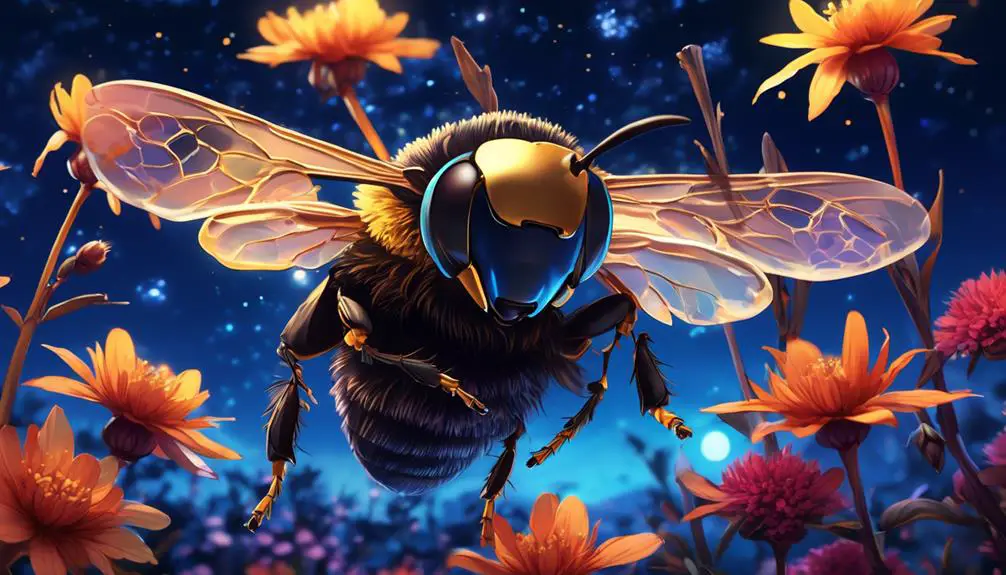
Now that you've gained some insight into the interesting behaviors of carpenter bees, let's examine their sleeping habits more closely.
These bees, unlike many other insects, don't sleep in a hive. Instead, male carpenter bees sleep in the same flowers they feed on during the day. They'll clutch onto a flower with their jaw and remain motionless throughout the night.
Females, on the other hand, sleep in their nests. After a long day of foraging and maintaining their nests, they retreat into the small tunnels they've bored into wood. Inside, they hang upside down, secure in a slumbering state.
There's a physiological reason for this behavior. Sleep, for these bees, is vital to memory consolidation. It's during this resting phase that they process spatial memories, crucial for efficient foraging.
Connection Between Carpenter Bees and Flowers
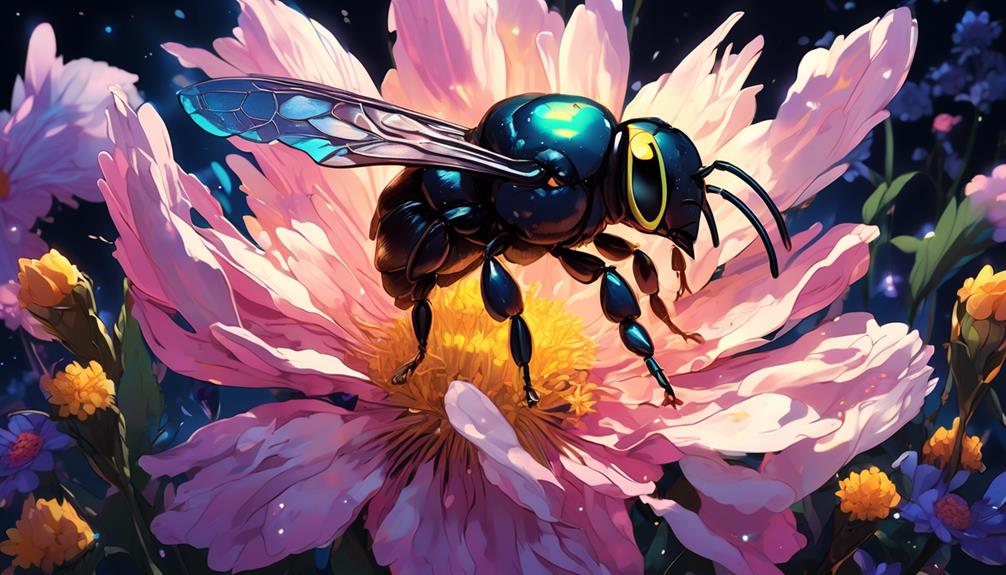
Undeniably, flowers play a crucial role in the lives of carpenter bees. They serve not only as their food source but also as a resting place for males during the night.
These industrious insects rely heavily on flowers for their sustenance. They collect nectar and pollen to feed both themselves and their offspring. Flowers' nectar, a sweet liquid, provides the bees with energy. Pollen, on the other hand, offers proteins and fats that are essential for the growth and development of their larvae. You'll often see carpenter bees hovering near flowers, their long tongues sipping nectar, and their bodies dusted with pollen.
But flowers aren't just a cafeteria for these bees; they're also a bedroom. Male carpenter bees, unlike females, don't dig nests. Instead, they seek shelter in the petals of flowers, sleeping there during the night. This behavior is likely a survival strategy, as staying in flowers reduces their exposure to predators and adverse weather conditions.
Unusual Facts About Carpenter Bees
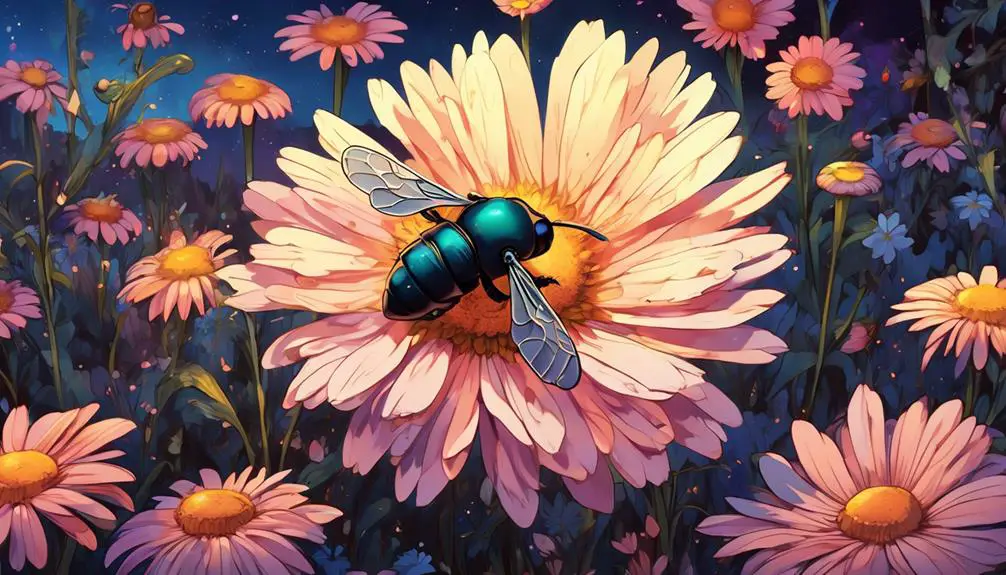
Diving into the world of carpenter bees, you'll find an array of fascinating and perhaps unexpected facts about these industrious insects. One might think of bees as hive-dwelling creatures, but carpenter bees are solitary. They don't live in colonies and each female bee prepares her own nest, usually in a piece of weathered wood.
Unlike honey bees, carpenter bees don't produce honey or beeswax. Instead, they feed on nectar and pollen, which they store in their nests for their offspring. It's not just their diets that make them unique, but also their appearance. Male carpenter bees are completely black, while females have a shiny black top and a fuzzy yellow bottom.
Despite their reputation for damaging wooden structures, carpenter bees are crucial pollinators. They use a process called 'buzz pollination,' in which they vibrate their bodies at a frequency that shakes the pollen loose from certain types of flowers. This is a vital service for our ecosystem and our food supply.
Debunking Common Carpenter Bee Myths
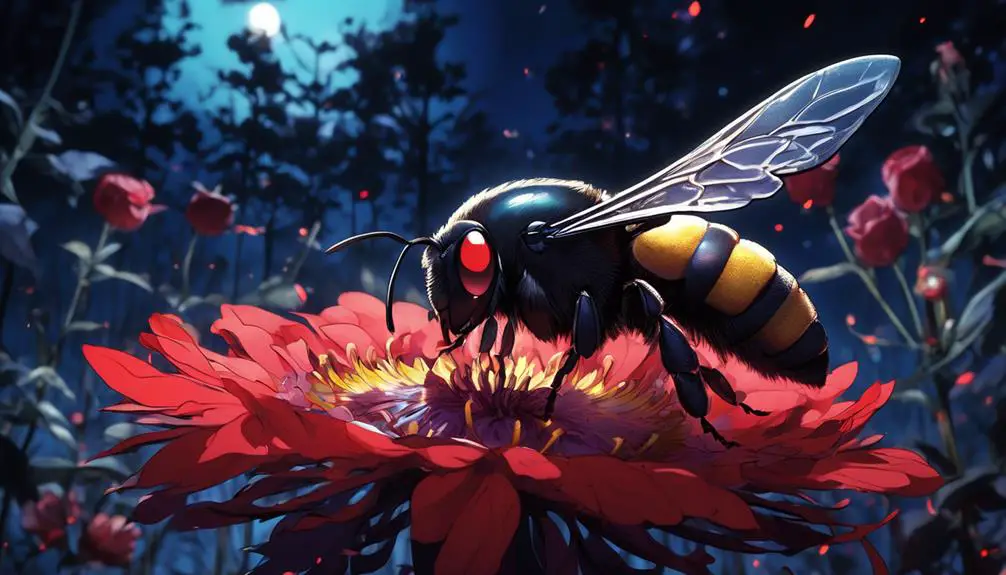
While it's clear that carpenter bees play an essential role in our ecosystem, there are several common misconceptions about these insects that need to be addressed.
First, you may have heard that carpenter bees are aggressive. In truth, only female carpenter bees have stingers, and they're unlikely to sting unless threatened. Males, despite their intimidating hovering, can't sting at all.
Another myth is that carpenter bees will destroy your home. Yes, they bore holes in wood to nest, but they typically prefer untreated, unpainted wood, and rarely cause structural damage. It's essential to recognize the difference between infestation and a few solitary bees using your deck for nesting.
Conclusion
So, do carpenter bees sleep in flowers? Not exactly. They're more likely to rest in their nests, located in wood.
However, their strong connection to flowers is undeniable, as they play a crucial role in pollination.
These intriguing and misunderstood creatures continue to fascinate us with their unique behaviors.
Remember, the next time you spot a carpenter bee, appreciate its role in our ecosystem rather than subscribing to common misconceptions.

